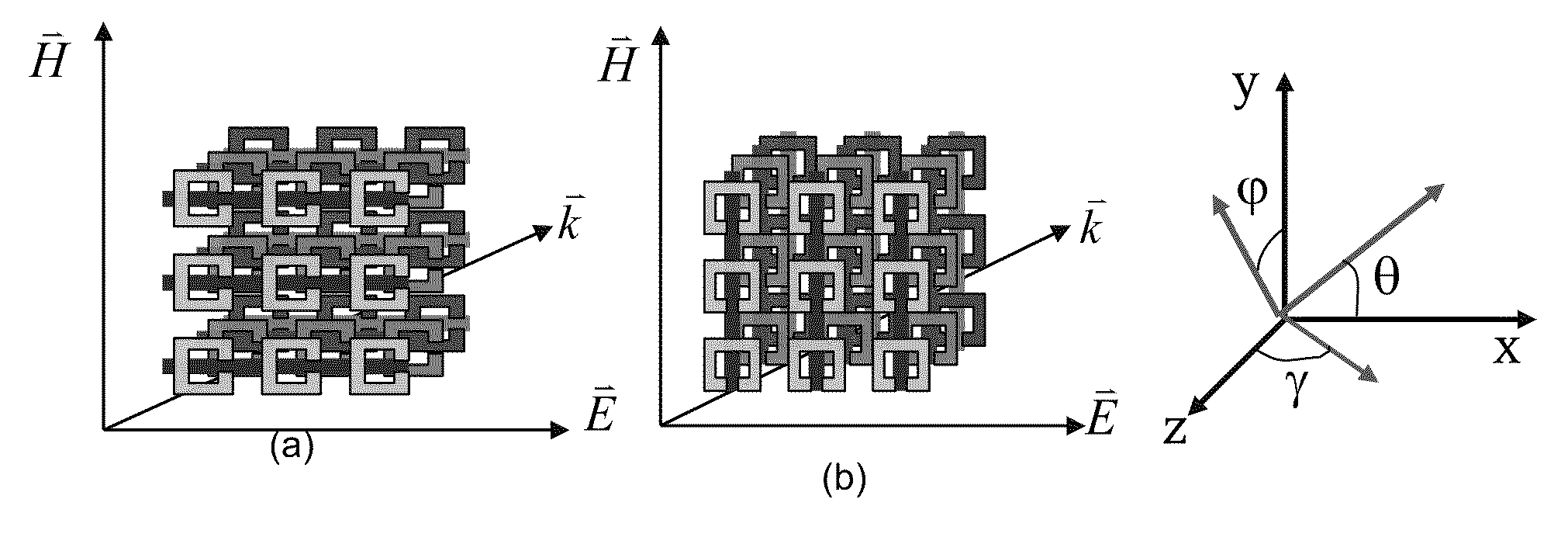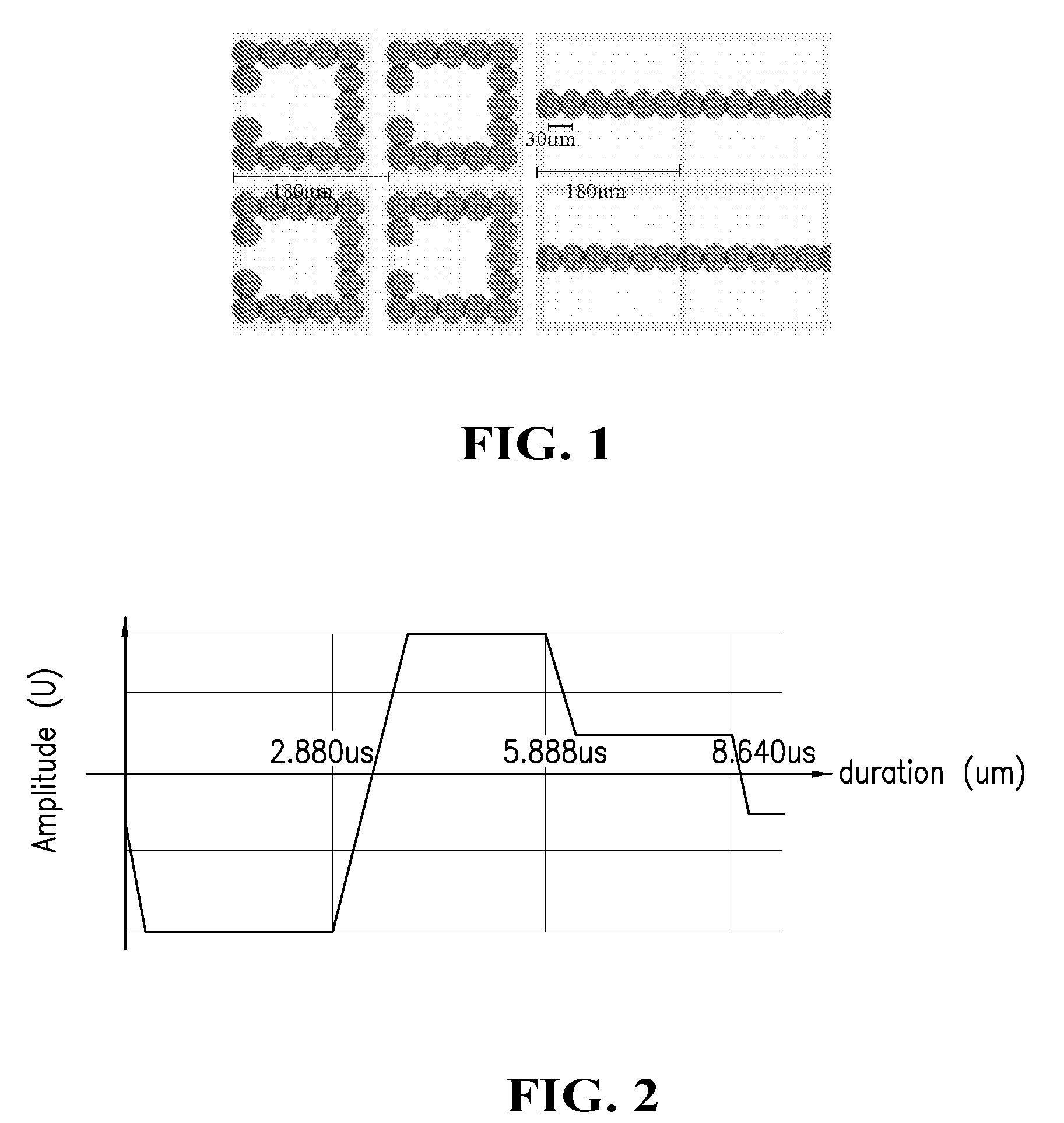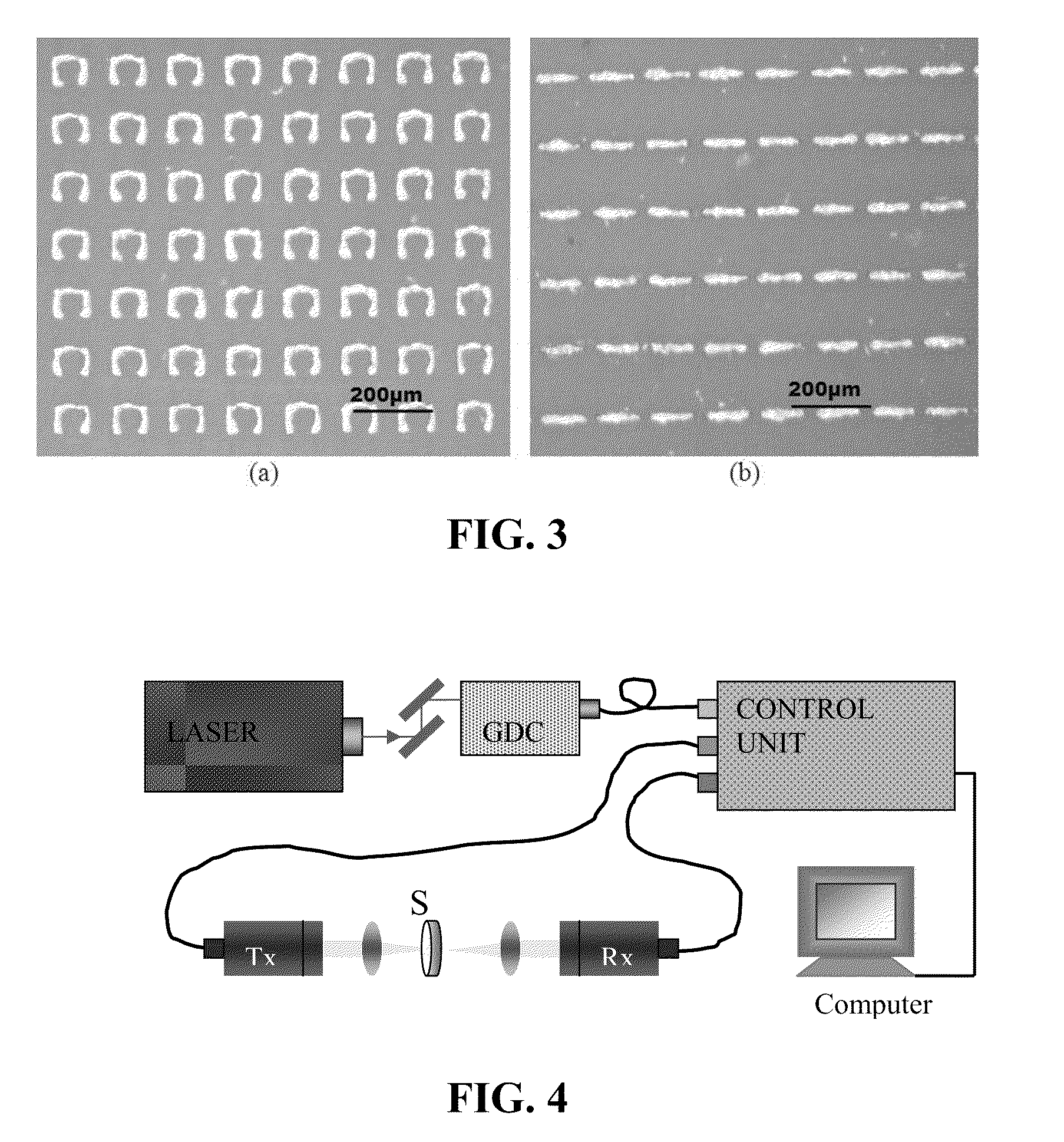Metamaterials with terahertz response and methods of making same
a technology of terahertz response and metals, applied in the field of metals, can solve the problems of limited thz device scope, difficult to find natural materials with necessary properties, and inability to fabricate mtms into bulk three-dimensional slabs
- Summary
- Abstract
- Description
- Claims
- Application Information
AI Technical Summary
Benefits of technology
Problems solved by technology
Method used
Image
Examples
example 1
[0048]Now referring to FIG. 1, patterns of split ring resonator (SRR) and microstrips structures were deposited on top of a copper-clad Kapton® polyimide sheet with liquid polyimide using a microfluidic-jetted technique by microdroplet generation of approximately 1 pL. The liquid polyimide was purchased from HD MicroSystem® and mixed with a solvent, Pyralin thinner, in a ratio of 1:8 parts. This fluid is supplied as a solution suitable for the coating application. It can be coated onto a variety of metals and is inert with respect to the etchant, thus it is suitable to use as masking material for fabrication of copper samples. The microdroplets were placed drop by drop on the substrate to form the final desired pattern. The patterned copper clad Kapton sheet was then subjected to an etching process before it was annealed at 160° C. for 30 minutes. The deposited polyimide patterns act as a mask to prevent the copper under the pattern from being etched away by the etchant.
[0049]Table ...
example 2
[0064]Three-dimensional alternative-stacking nanogold Left-handed metamaterials with structure lattice size of 200 micron were designed and evaluated using a THz spectroscopy system. The fabrication steps for the metamaterials are elaborated as follows.
[0065]Now referring to FIG. 11, a SRR (p=180 μm) was deposited on Kodak EasyShare matte photopaper. The deposited material was dodecanethiol functionalized nanogold having 4-5 nm particle size in 2% in toluene having ˜10 cps viscosity. The drop size was ˜30 μm using a 1 pL cartridge. Thickness of the structures was 38.7 nm. The image was taken by a built in Fiducial camera.
[0066]Now referring to FIG. 12, a SRR (p=80 μm) was deposited on a 127 μm thick polyimide substrate. The deposited material was a conductive polymer PEDT / PSS with ˜11 cps viscosity. The drop size was ˜18 μm using a 1 pL cartridge. The thickness of the structure was 0.7 μm. The image magnification is 20× using a bright field microscope.
[0067]Now referring to FIG. 13,...
PUM
| Property | Measurement | Unit |
|---|---|---|
| Flexibility | aaaaa | aaaaa |
Abstract
Description
Claims
Application Information
 Login to View More
Login to View More - R&D
- Intellectual Property
- Life Sciences
- Materials
- Tech Scout
- Unparalleled Data Quality
- Higher Quality Content
- 60% Fewer Hallucinations
Browse by: Latest US Patents, China's latest patents, Technical Efficacy Thesaurus, Application Domain, Technology Topic, Popular Technical Reports.
© 2025 PatSnap. All rights reserved.Legal|Privacy policy|Modern Slavery Act Transparency Statement|Sitemap|About US| Contact US: help@patsnap.com



